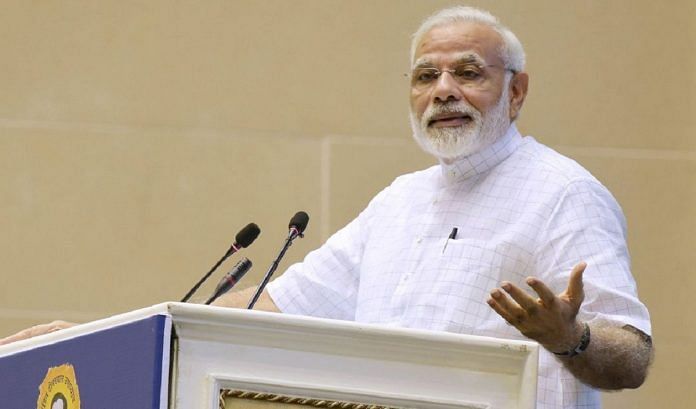The business community’s ‘vote’ in 2019 may not count as dearly as farmers and other rural voters. For the business community, Modi’s initial reform outburst has faded into memory.
The Modi government is starting the last year of its five-year term in office. He was expected to be India’s most economy-focused Prime Minister in history, with a powerful clarion call of “minimum government, maximum governance”.
His track record of initiating new reforms to support private sector-led growth has been solid, but he heads into next year’s national election with few recent initiatives. Our ‘India Reforms Scorecard’ tracks progress on the 30 most significant reforms from the day Modi took office. While nine of these reforms have been completed, two-thirds were in the first year in office. If the old trope about slowing reforms ahead of elections holds true, we may have to postpone any hopes for progress until mid-2019.
Despite steady economic liberalisation across multiple decades, the Indian economy remains heavily controlled. The government retains majority stakes in companies with dominant positions in many industries, including insurance, banking, electricity generation and distribution, defence production, and hydrocarbons. Many sectors fall under price-control regimes, including pharmaceuticals, medical devices, and hydrocarbons.
Foreign equity restrictions continue to impede greater competition in the marketplace in sectors such as retail, legal services, insurance, media, and defence. And most industries face a set of common concerns related to setting up and operating a business, such as complex business licensing regimes, onerous labour and land rules, access to basic infrastructure, vague taxation rules, and mandatory lending rules for banks.
Not long after Modi’s election in 2014, we prepared a list of the 30 most significant and measurable pending business reforms. Every month we review and update the list, noting if they have been “completed”, are “in progress (e.g. a bill has been drafted, or approved by one chamber of Parliament)”, or “incomplete (e.g. no noticeable progress).
We tracked a great deal of initial progress. Sectors such as coal and oil & gas were deregulated or sensibly reregulated. Price controls on some hydrocarbons were lifted. A few sectors like railways were opened to private players, and others such as construction saw relaxed rules for foreign investors. Transparent auctions for spectrum were adopted, and the remaining items reserved for production by small businesses were de-notified. Important changes to India’s bankruptcy law were approved by Parliament in 2016. And the national goods and services tax (GST) came into force in mid-2017.
A range of other reforms now sit half-complete. Foreign equity restrictions for sectors including insurance, retail, and defence have been limited, but still hold foreign investors to minority stakes (although the defence sector’s FDI rules appear to have ill-defined scope for majority ownership). New cases of retrospective taxation have been blocked via an ad-hoc measure. Banks have a bit more flexibility, via tradeable permits, to meet their mandated lending targets. Subsidies are slowly shifting to a more efficient direct-transfer model, and price controls in some areas like natural gas have been relaxed.
The business community’s “vote” in the upcoming national election may not count as dearly as that of key groups such as farmers and other rural voters. But the business community may be less enthusiastic about Modi as the initial reform outburst fades into memory.
In a government’s final year in office, reforms that involve tough political negotiations such as land and labour reforms may not be possible. Similarly, reforms that would likely invoke temporary pain like GST would sensibly be delayed until after the national election. But other moves like deeply cutting back required business licences, relaxing foreign investment restrictions, and requiring a more thoughtful approach to the adoption of new business regulations would be heartily welcomed, and not trigger concerns among voters.
Legislative reforms may become increasingly difficult to enact in the next year. Several ‘solid’ members of the National Democratic Alliance (NDA), such as the Andhra Pradesh-based Telugu Desam Party (TDP) and the Maharashtra-based Shiv Sena, are eagerly distancing themselves from the BJP as they head towards the election. With a majority in the Lok Sabha, the BJP holds only 68 of 244 seats in the Rajya Sabha. So, reforms that do not require parliamentary approval would likely be easier over the next year.
Concluding nine of the 30 largest economic reforms over four years is a commendable record. But most of this progress took place in the first year. The reform process has noticeably slowed.
Consolidating past reforms, such as ironing out implementation difficulties in enacting the GST, makes sense. But there is time and scope to do more, which would help secure strong support from the business community in next year’s election, and likely trigger new growth in the near future.
Richard M. Rossow is senior adviser and Wadhwani Chair in US-India Policy Studies, Center for Strategic & International Studies, Washington DC.






